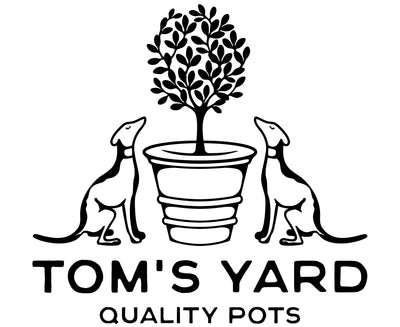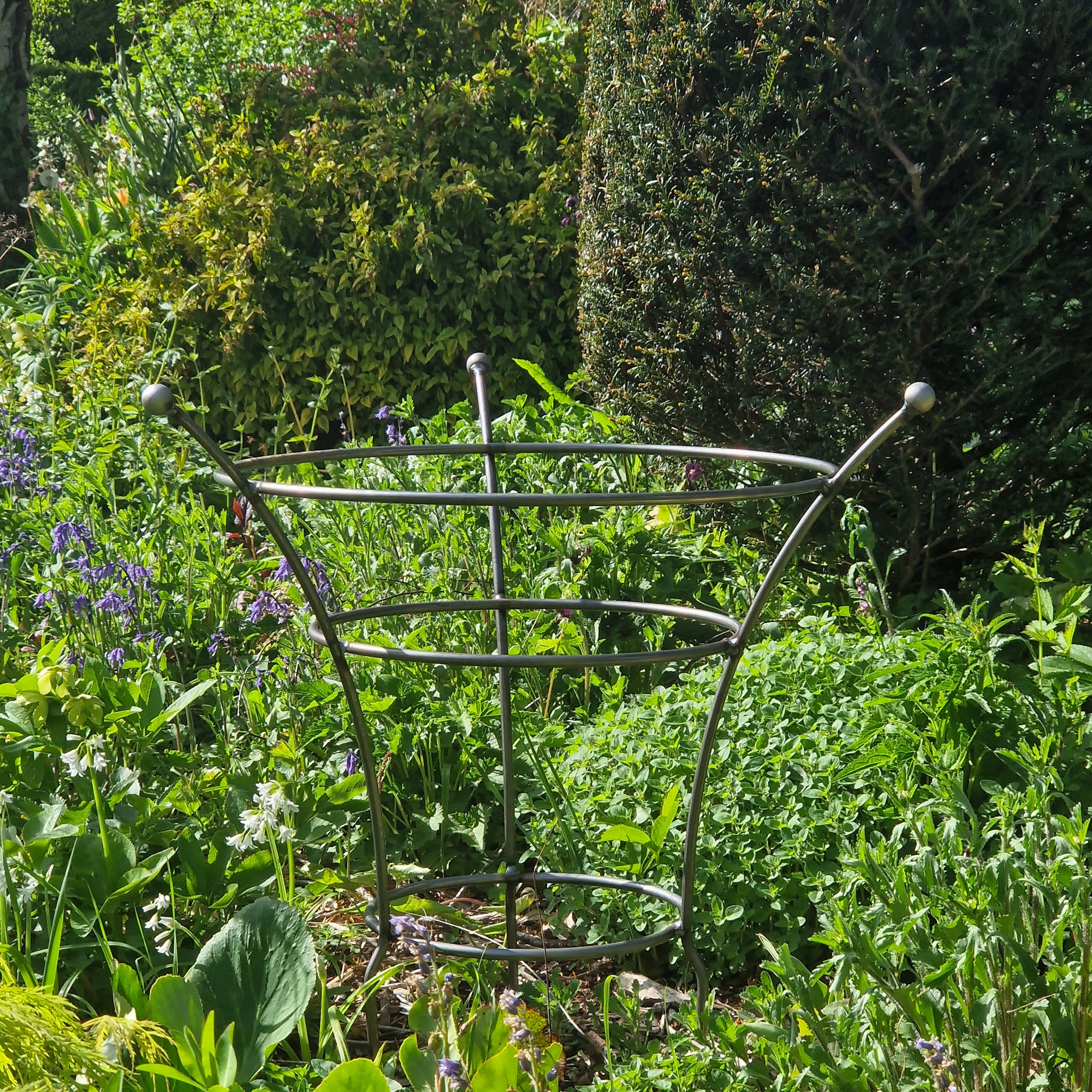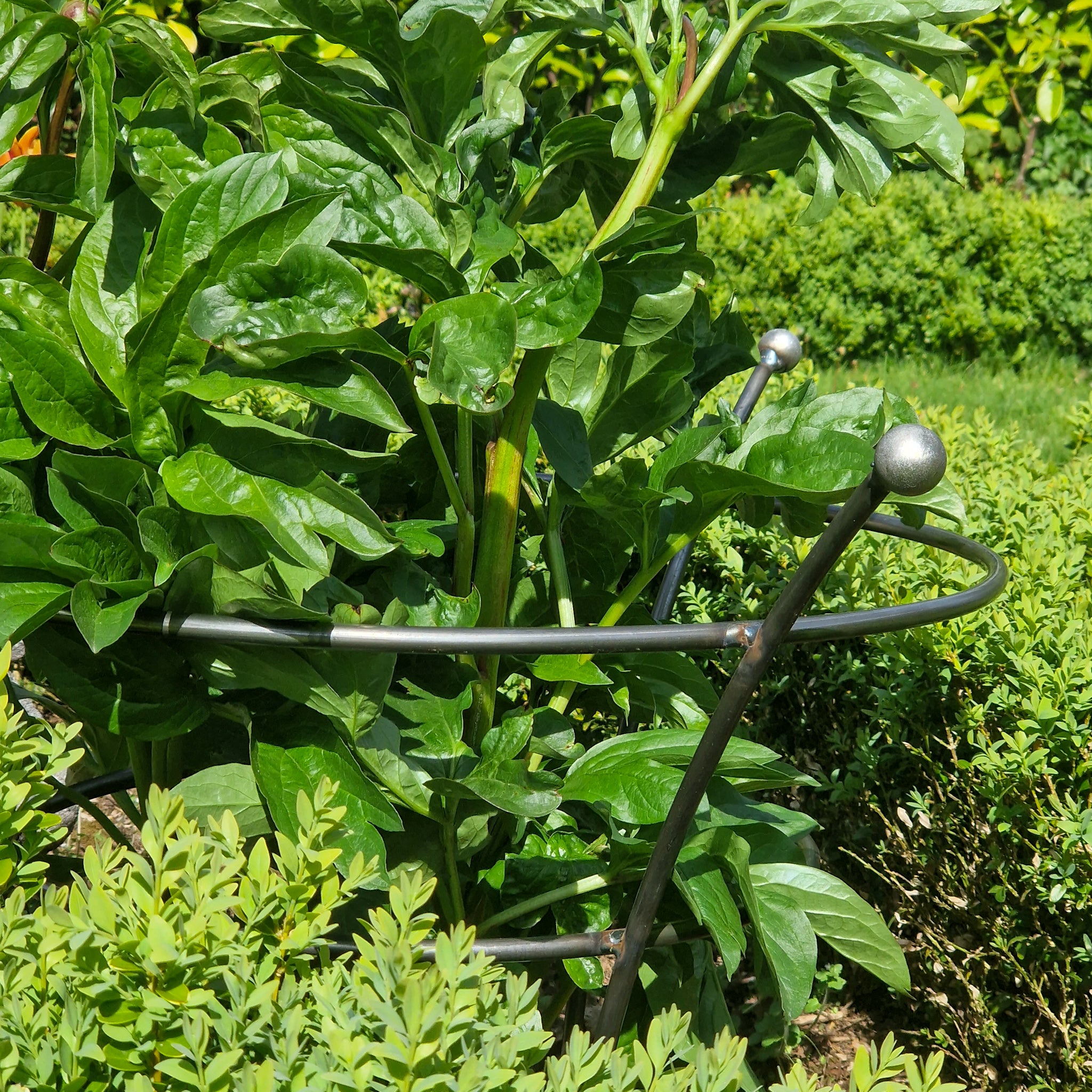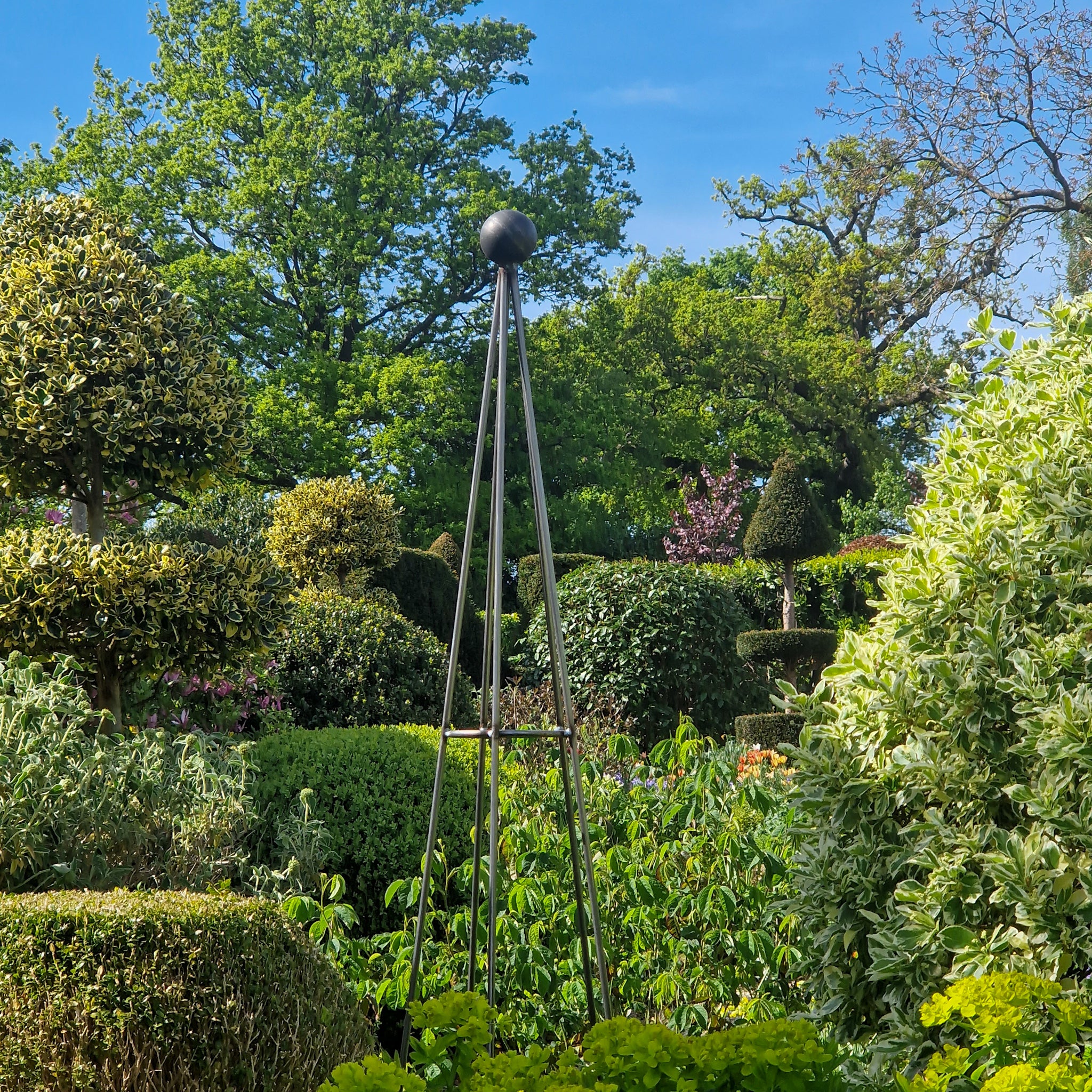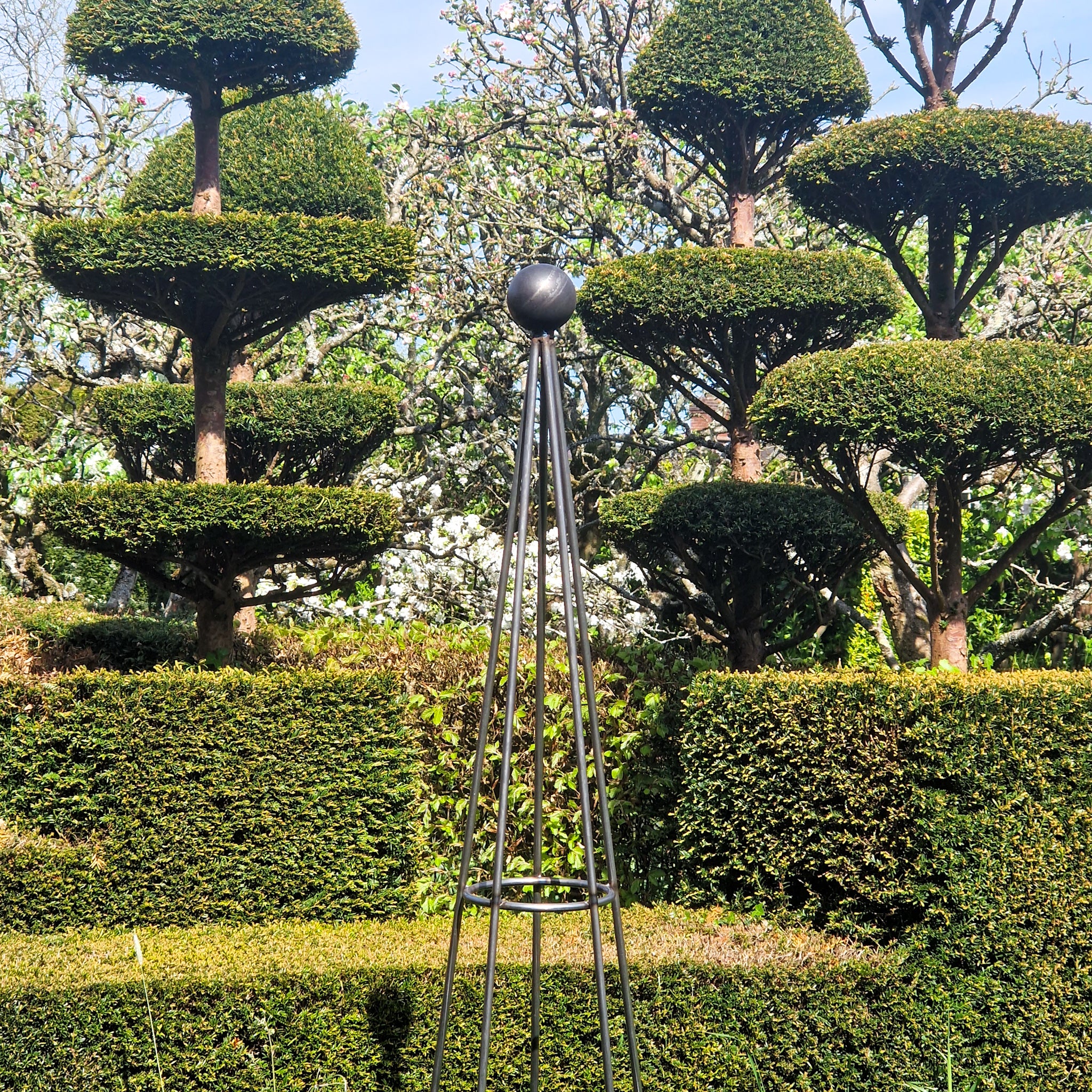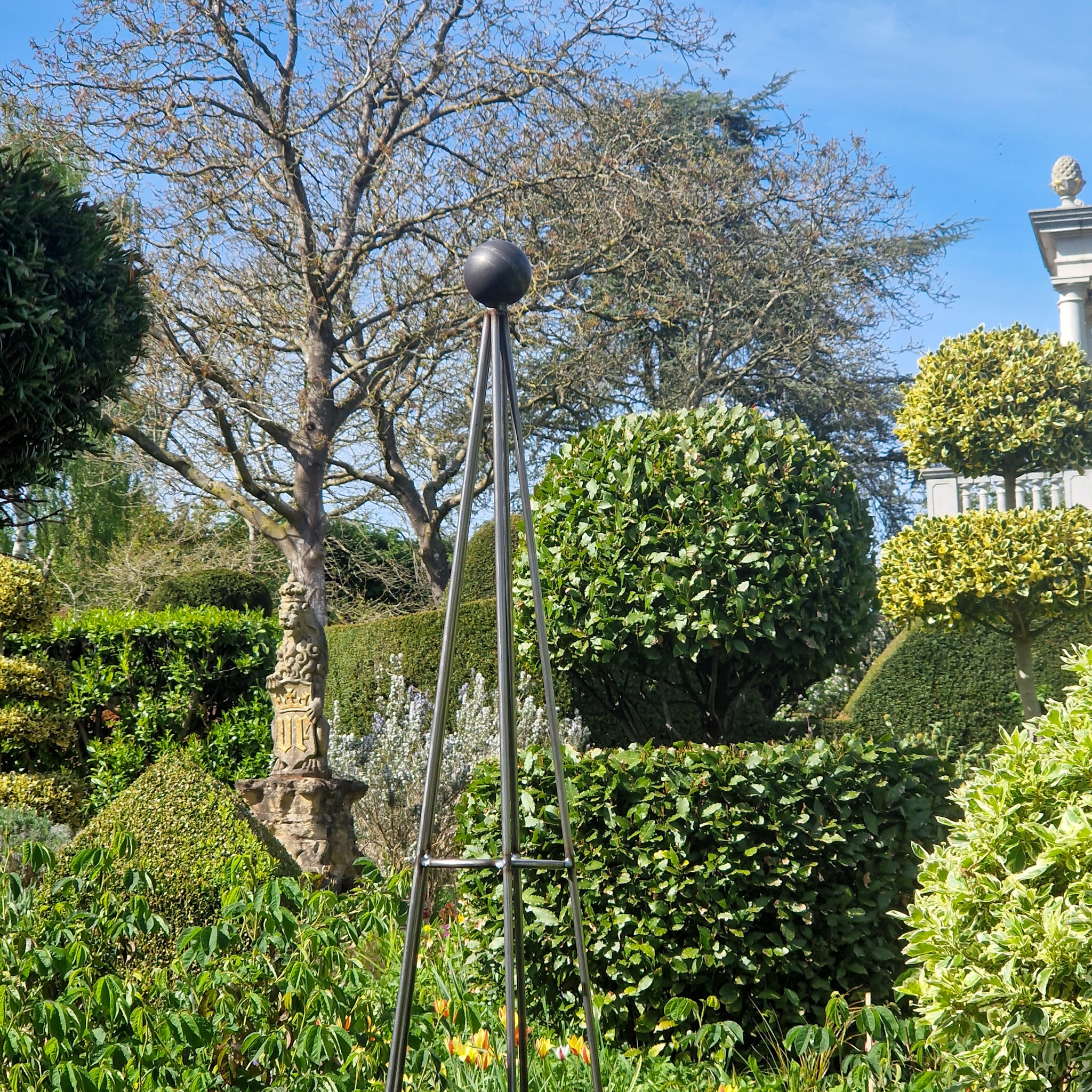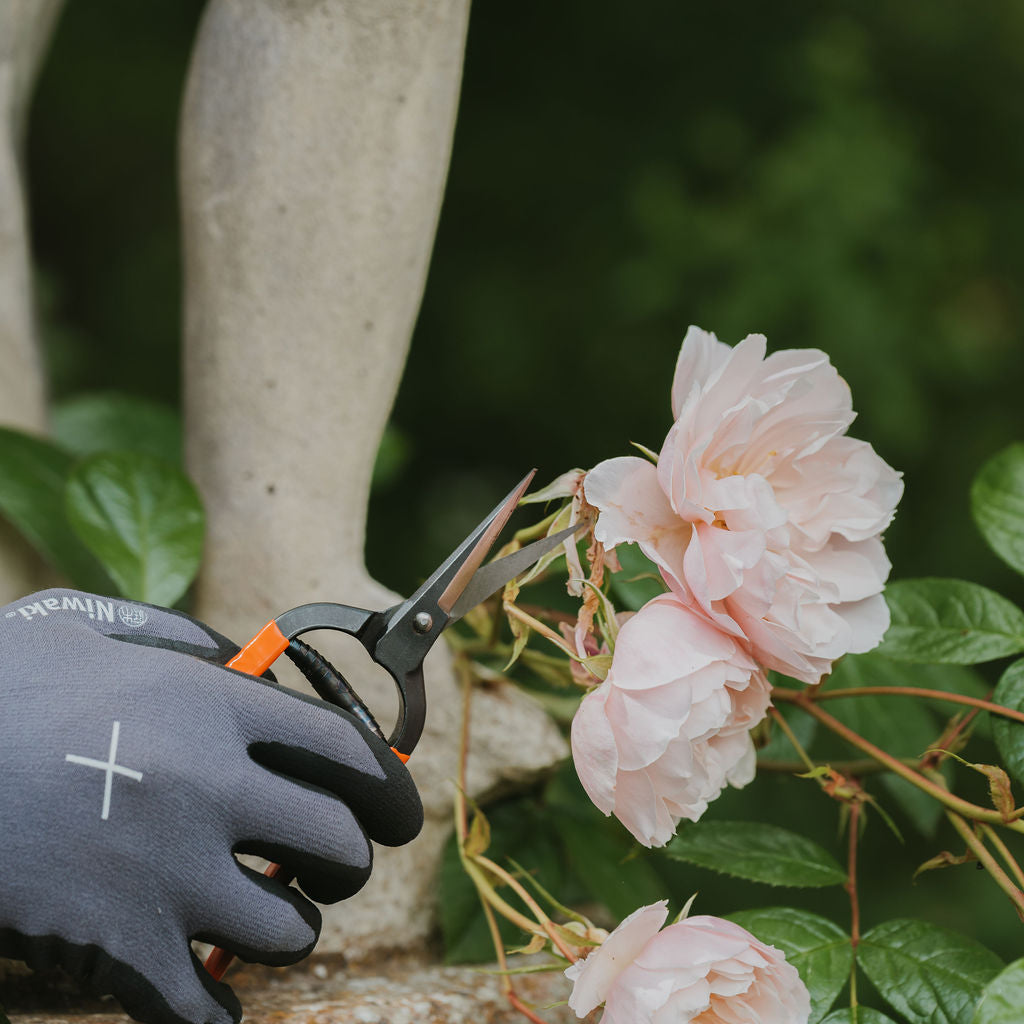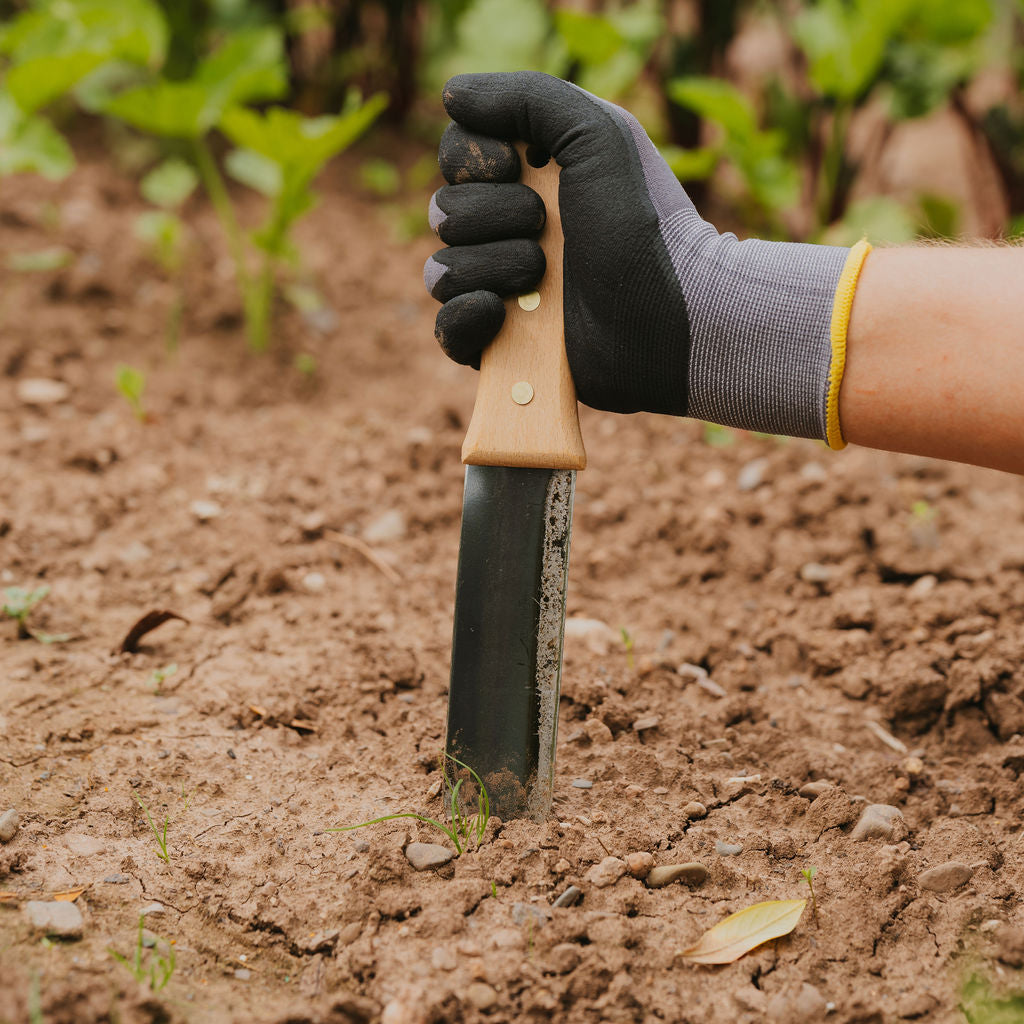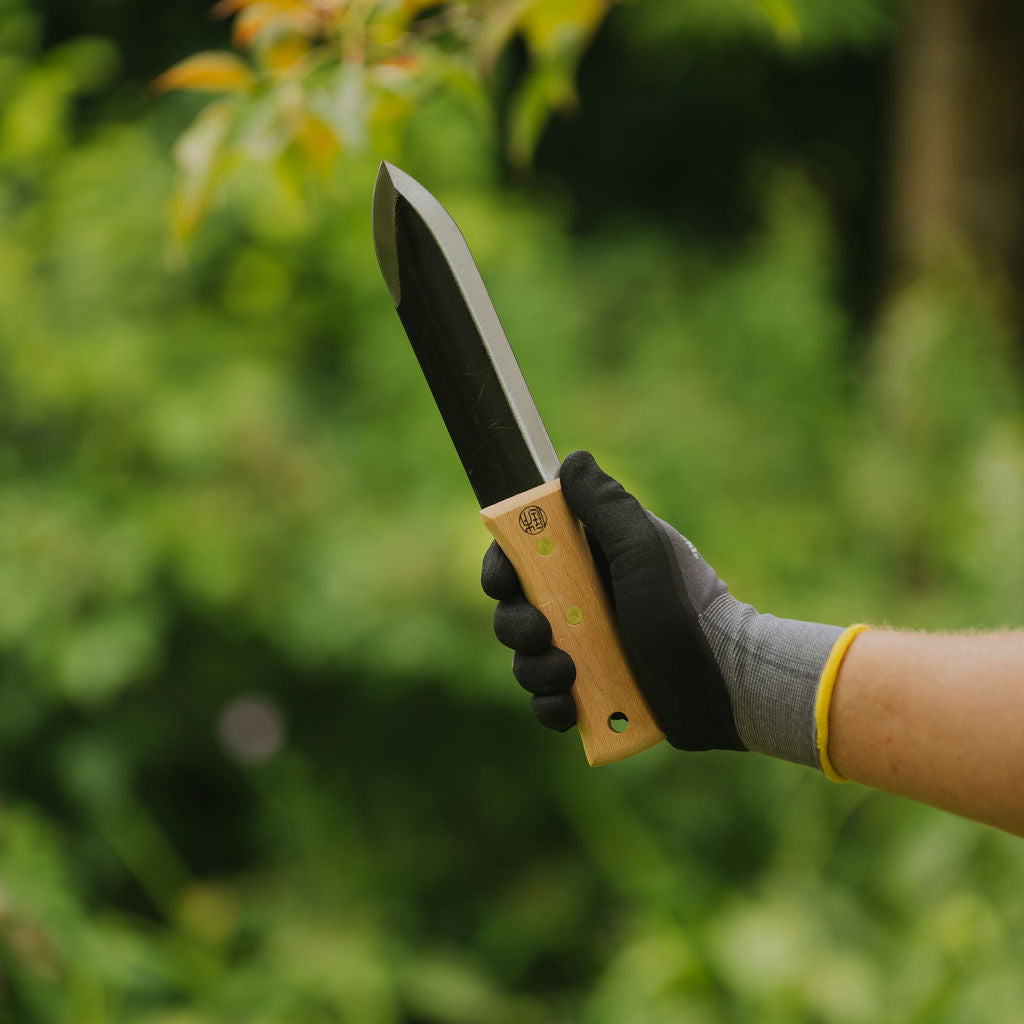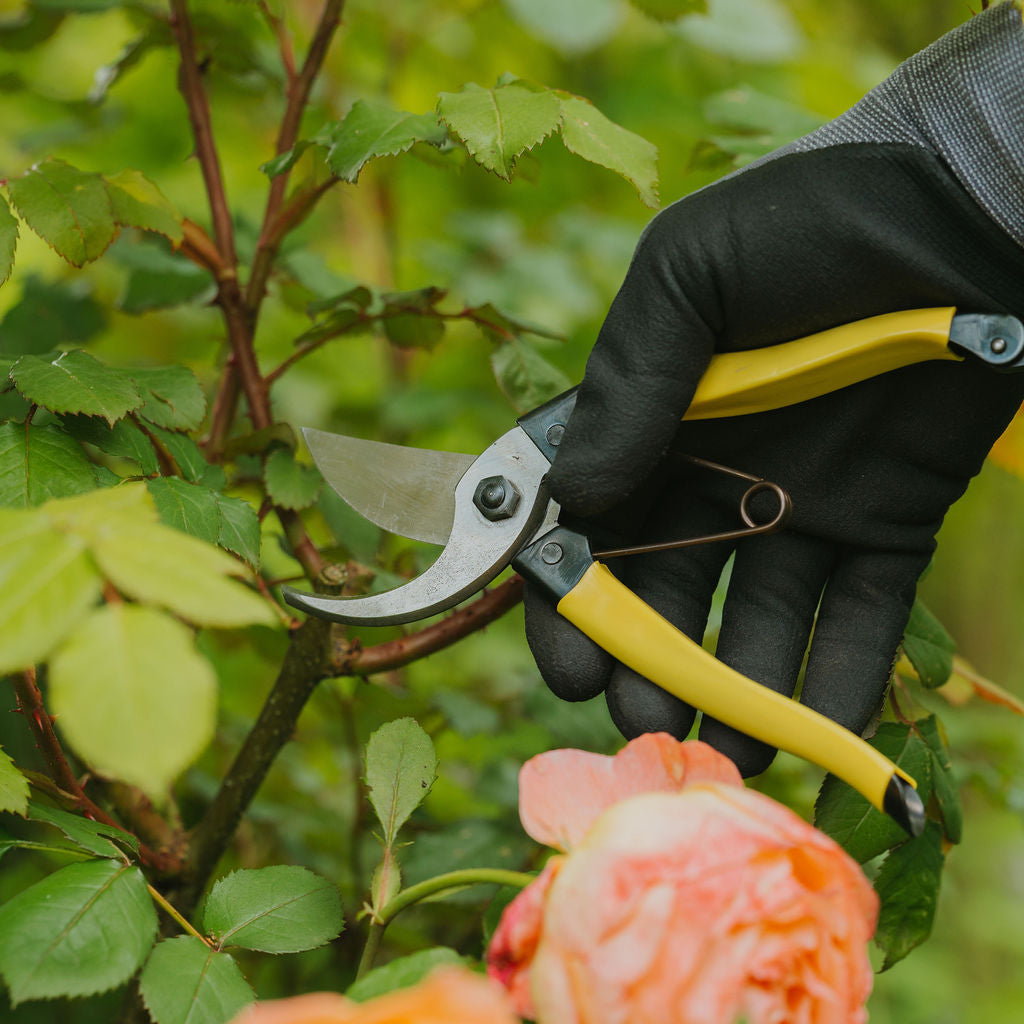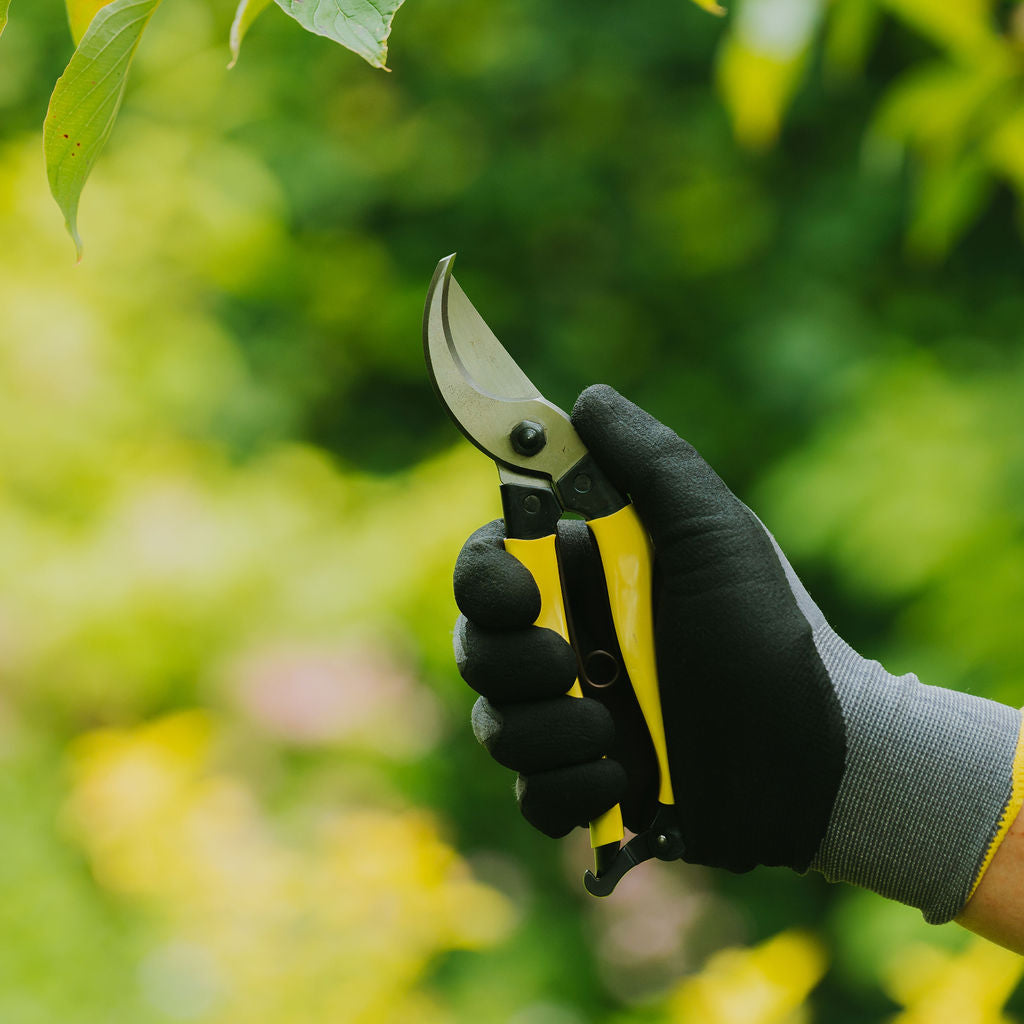How many ladies are a Trustee of Garden Organic UK, speaker, writer, garden designer, garden consultant AND hold a Masters of Horticulture? I don't know many, but here's one - the amazing Nicola Hope.
Since meeting Nicola at a plant fair in 2023, our friendship has blossomed. I'm very lucky to know such a friendly, knowledgeable & seriously experienced horticulturalist. I knew when asking her to give some advice, she'd come out with some fantastic comments and stories.

You started off your journey as an Assistant Gardener at King Charles’ Highgrove - are you able to give us an insight into your time there?
My time at Highgrove was formative. It is the whole reason that I garden the way I garden today. To say that getting my first ever job at Highgrove was fortuitous is the biggest understatement of the century. The boss, as we called the then Prince of Wales, was ridiculed for his strict organic ethos at the time, but he has since proven to have been right all along. We need to garden with nature and with absolutely no synthetic chemical pesticides, herbicides or fungicides. There are no valid arguments against this, especially not on a horticultural scale.
On a much lighter notes - I adored my time at Highgrove for the beauty, the colour, the scents, the experience with a diversity of plants, the doors that it has opened for me since, but mostly for the people. Highgrove showed me that gardening is as much about the characters that you find in and around the horticultural world as it is the horticulture itself.
You had a period gardening at The Abbey House in Malmesbury. For those who may not know this interesting Wiltshire garden, do tell!
When I give talks to gardening clubs I include a photograph of myself gardening at The Abbey House and I tell the audience that I am not going to tell them the name of the garden, instead I am going to give them a clue. I then say that the clue is that I am wearing clothes, but the people who owned it at the time preferred not to. Before I get the the end of my clue, several members of the audience will start laughing and and shout out the name of the garden. It was notorious at the time for being the home of The Naked Gardeners… and believe me, they fully subscribed to that lifestyle. I even worked the inaugural Naked Day when they invited all of their naturist mates to come and hang out in the garden too. It was an eye opener, that’s for sure! Beyond that, it was a super garden in which to work. It was full of tender shrubs that I hadn’t worked with before and it was quite possibly the most maximalist garden that I have ever worked in. It was a riot!

Something very exciting that I didn’t know was that you have been on a number of ‘botanical travels’. Visiting Africa, China and Italy… what did you get from these trips?
When I was in my twenties - footloose and fancy free - I took advantage of several grants and bursaries available to young horticulturists and went off travelling as much as possible. I am so glad that I did that now and I will encourage my daughters to do the same in whichever industry they choose to explore.
The greatest gift that these botanical travels gave me was the chance to see how certain plants grow in the wild. I saw Meconopsis growing in the foothills of the Himalayas, tiny Saxifraga enjoying the freshest alpine air and Agapanthus growing like weeds on the side of the roads in Southern Africa.
Experiences like these inform how I design and plant up gardens. They especially inform how I design and plant up containers. That’s the wonderful thing about pots, isn’t it? If you haven’t got the right conditions in your garden to grow Saxifraga then you can recreate Alpine Italy in a container. I am very pleased that I managed to squeeze a pot reference into this Q&A so early on !
Let’s get stuck into what you do now. You run an organic gardening consultancy, alongside design. What is organic gardening and what is the importance of this?
Oh my goodness, this is a minefield. Thank you for asking. I will try my very best… Organic gardening for me is more than choosing not to use synthetic and harmful chemicals and other harmful practices in my garden, and the gardens in which I work. It is an approach that encompasses a way of looking at your garden in a totally different way than gardeners in the UK have traditionally been taught to. It is all about respect. Many gardeners view their gardens as pieces of land than need to be conquered. The gardener, the owner, the controller. I encourage gardeners to look at that land, however big or small - even window boxes and containers - and see themselves as part of something bigger than that. We are simply one part of an ecosystem that can flourish if we treat it with the respect that it deserves. Even slugs and snails have their part to play in that ecosystem.
It comes down to respect for the space, for the wider environment outside of your garden boundaries, for the macrocritters (humans, birds, squirrels, cats etc) and the microcritters (many that are too small for us to see) that frequent it.

‘Soil health’ is a term that appears frequently in garden media; Break it down, what is ‘soil health’ and what role does it have to play in our gardens?
‘Soil health’ has been in the garden media, and wider news media, for a very good reason. On a horticultural scale it is important because the soil grows our plants, not us.
We can kid ourselves, but it’s those microorganisms in the soil that actually do the growing. So we need to feed our soil with (at least) an annual dose of (preferably) homemade compost. This is especially important if we are growing annual crops like vegetables or cut flowers. It is far more important that this is done on an agricultural scale, because this will determine whether the human population continues to prosper or not.
I cannot change what happens in global agriculture, but I can change what happens on my plot. I have a vague idea in my head that I would like to challenge all garden designers to include an area for composting in their RHS or BBC Gardener’s World Live show gardens. Then the general gardening public will stop striving for ‘the perfect looking garden’ and start developing their ‘perfectly balanced garden’.
Composting is essential to soil health and most people can give it a jolly good go. A lot has changed since I was double-digging Sting’s vegetable garden just over two decades ago. I accidentally discovered no-dig a long time before I found out about Charles Dowding because it seemed like the intuitive thing to do on thin Cotswold Brash soil. It turns out it works for all soil types and it has probably saved my back from permanent damage too. Win win.
The whole rewilding subject… This is a current topic stirring a range of responses from gardeners, farmers, land owners and the general public. For those who aren’t up to speed - what is rewilding and where are you at with it?
Those who are interested in what rewilding really is need to read the most fascinating book - Rewilding by Isabella Tree. This shows beautifully how it can work on an agricultural scale. In our gardens, I think we should be talking more about biodiversity, balanced ecosystems and how we can play our part whilst also remembering that humans are gardeners at heart and it is hard not to fiddle around with runner beans and showy dahlia varieties. There are plenty of scrubby, neglected gardens out there. If I think about my neighbouring gardens - there are some that have manicured lawns, some with billowing herbaceous borders, some with veg patches, ponds… the list goes on. That is diversity, and diversity is great.
What I cannot understand is plastic grass, chemical use or building an impenetrable fortress wall around your garden. Not only is it shortsighted, but it is downright unfriendly. How are the hedgehogs supposed to get in and out? Ultimately, it comes down to two aspects that I have mentioned before. Respect and a mindset of ‘sharing’ rather than ‘owning’. Rewilding is the ultimate act of sharing. We can do this in our gardens without things turning back to scrubland. I try to have scruffy areas in my small home garden to create habitats for all sorts of macro and microcritters, but I understand that it is not for everybody.

We appear to be facing more turbulent weather. I read an article the other day stating rainfall is increasing yet we are also seeing hotter months throughout the year… How do you think this new weather is going to affect gardens and our planting choices? Are adaptations needed?
Adaptions are definitely needed. A small shift in thinking from each and every one of us. I am always talking about my third water butt, but haven’t implemented it yet. That should definitely my garden resolution for this year.
I lost plenty of plants during the extreme cold of winter 2022/2023. These were plants that I had included because of the warmer winter trend - Salvias, rosemary, bay. The lesson I learnt is not to get complacent. Observe and make notes of the plants that did survive (e.g. my wonderful olive tree!) and build on that. Visit lots of gardens in all seasons for inspiration and look after that all important soil. It is, however, galling to think that a lot of gardeners are making these changes when those at the top in the water companies are allowing criminal amounts of water wastage and contamination to happen as we speak.
Gardens that include better rainwater harvesting systems should be standard in all new residential and business developments. Small changes are needed in our gardens and huge changes are needed in how our country is run. Flooding is on the increase and it is because not enough thought and care is given to green spaces and their management.
Like fashion, gardening has its trends. What are the current in’s of British gardening? Dare be controversial - are there any out’s?
Here’s a fancy word for a very simple concept that needs to be the no.1 trend in 2024 - polyculture. It means growing two or more useful crops in one small space. This is another gardening principle that I accidentally started practising at home and was chuffed to find a concept to fit. My ‘useful’ crops are all of my favourites, like runner beans for eating, willow and hazel for coppicing, herbs for the kitchen, dahlias for cutting, and eryngium because the bees go mad for it.
All of these crops make me happy and can be grown in close proximity to each other in a small space in a wonderfully informal but delightfully pretty aesthetic. Some are annual, some perennial and some are permanent fixtures. There are no rules in polyculture and that appeals to me massively. I am keen to spread the word.
I hope to see the back of impenetrable anti-hedgehog walls and fences in 2024, and, of course, a ban on the sale and use of harmful synthetic pesticides, herbicides and fungicides in gardens. I am also not a big fan of laurel in any situation.

If you could create your dream garden, what would feature? I know you have a taste for topiary!
How wonderful to be asked to dream! Yes, thank you for mentioning topiary. I am constantly dreaming of creating a modern topiary garden which would feature strongly geometrical but also individually characterful Taxus (yew) pieces. These would be surrounded by planting inspired by polyculture. It is beautiful, useful, edible and just plain dreamy.
My dream garden would have a wonderful water feature that would attract all sorts of wildlife but was also self-cleaning and maintenance free. My own garden at home is slowly becoming this dream but the budget doesn’t allow for immediate results!
I am very lucky that I already have my dream greenhouse, which allows me to grow my other horticultural passion - heritage variety tomatoes.
It’s fair to say you’ve visited your fair share of gardens. Do you have a top three?
So hard, Tom!!! Don’t be so cruel! Only three??? Ok, so all of my favourite gardens have had so much love lavished on them, and that is the key. I can point out many gardens that are very impressive, but the passion is missing and the visitor will not get the same emotional response.
My top three, in no particular order, are all loved and cared for by great gardening women with incredible vision. All are entirely organic and are great examples of what can be achieved if you respect your land and the wider landscape:
- Yeo Valley Organic Garden in Somerset - Sarah Mead @yeoorganicgarden
- Charlton Farm, Near Malmesbury, Wiltshire - Sarah Rivett-Carnac @sarah_rivett_carnac
- Blackland, Near Calne, Wiltshire - Polly Nicholson @bayntunflowers
Ask me again next week and I might give you a different response! (Can I also add Beth Chatto’s Garden? The Picton Garden? Babylonstoren in South Africa? My friend Susannah Dibben’s @dibflowers garden? No? Oh well !)

